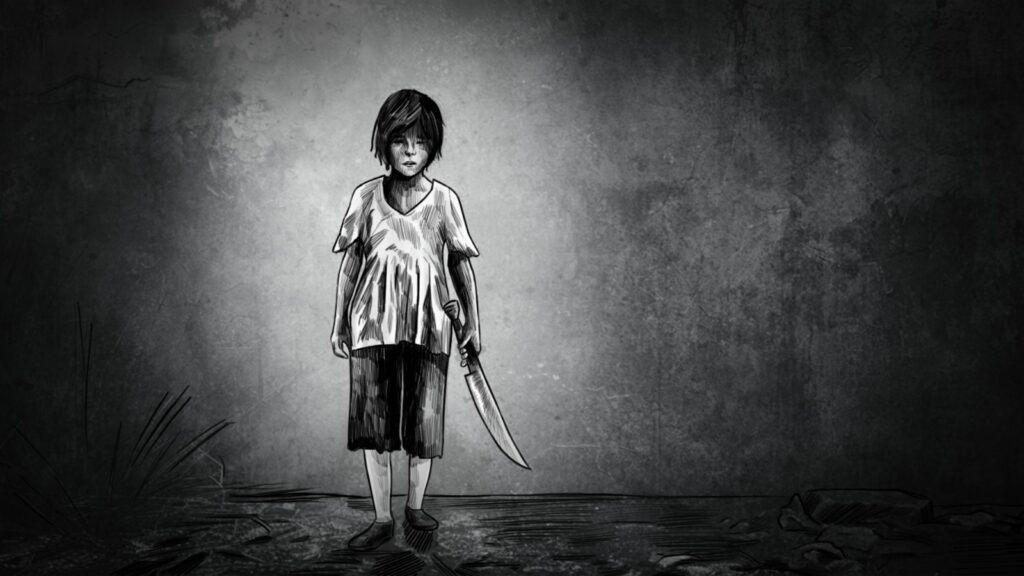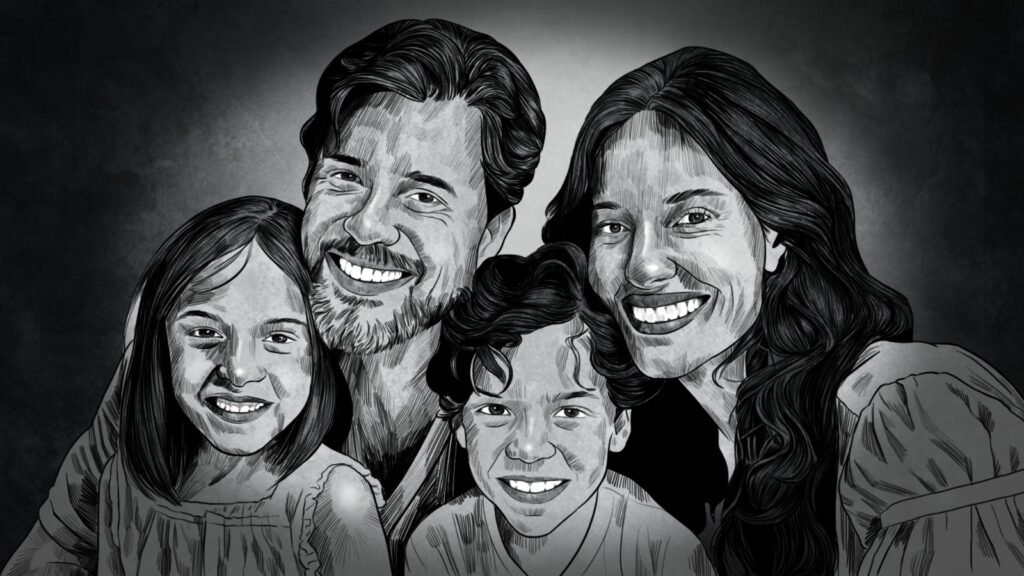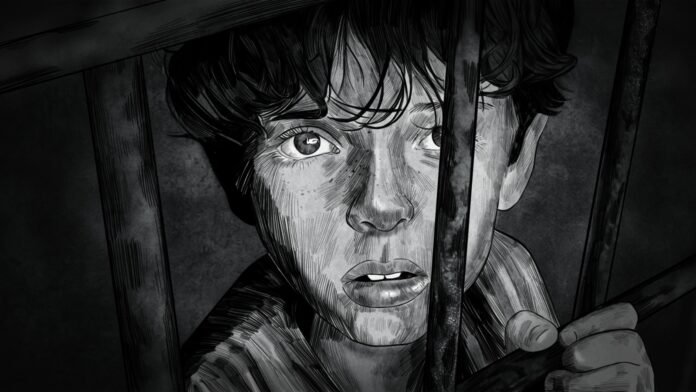In a world awash with information fluidity, raising awareness among the public and specialists about the differences between laws related to juvenile crimes, legal responsibility, and the effects on children is of utmost importance. This aims to increase awareness and support researchers in issues related to these crimes.
It is also essential to highlight areas for improving juvenile justice to enhance understanding and compliance with the law.
Age Stages
The term “Al-Hadath” linguistically in the “Al-Mu’jam Al-Wasit” dictionary refers to a young person.
However, legally, according to Article 1 of Qatari Law No. 40 of 2004 regarding guardianship over the funds of minors, a minor is “a child who has not yet reached the age of majority.”
The law distinguishes between an “incompetent minor” and a “competent minor.”
According to the same article, an incompetent minor is defined as “one who has not completed seven years of age,” and bears no responsibility as per Article 7 of Law No. 1 of 1994 concerning minors, stating that “there is no responsibility on anyone who has not reached the age of seven.” All financial transactions made by the incompetent minor are considered absolutely void, as per the first paragraph of Article 2 of Qatari Law No. 40 of 2004 regarding guardianship over the funds of minors, which states that “the financial transactions of an incompetent minor are absolutely void.”
A competent minor, on the other hand, is “one who has completed seven years of age but has not yet reached the age of majority.”
The second paragraph of the same article states that “the financial transactions of a competent minor are valid whenever they are purely beneficial to him, void whenever they are purely harmful, and voidable for his benefit when they are in between benefit and harm. The right to annulment is forfeited if the minor’s guardian, the authority, or the minor himself after reaching the age of majority, approves it, in accordance with the law.”
The Age of Majority is divided into three types: criminal majority, civil majority, and legal majority.
The civil majority, according to Article 1 of Qatari Law No. 40 of 2004 regarding guardianship over the funds of minors, is defined as “completing eighteen years of age,” at which point a person is considered fully competent and responsible.
The criminal majority is reached upon completing sixteen years of age at the time of committing the crime. Although a person of this age is legally considered partially competent, they are fully criminally responsible and are subject to the Penal Code rather than the Juvenile Law, except for the death penalty. Article 20 of the Penal Code No. 11 of 2004 states, “The provisions stipulated in the Juvenile Law apply to those who have completed seven years but have not yet reached sixteen years of age. The death penalty cannot be imposed on anyone who has not reached eighteen years of age at the time of committing the crime.”
In Islamic Sharia, according to an article titled The Criminal and Civil Responsibility of a Non-Adolescent Boy on the Islamweb site, the age of majority begins at “fifteen years of age according to the majority of jurists, or eighteen years according to Abu Hanifa and the famous opinion of the Maliki school. At this stage, a person is criminally responsible for all types of crimes, subject to the prescribed punishments if they commit adultery or theft, subject to retaliation if they kill or injure someone, and subject to all types of discretionary punishments.”
Al-Hadath
Legally, a minor is categorized into two types: a delinquent minor and a minor at risk of delinquency.
According to the first clause of Article 1 of Law No. 1 of 1994 concerning minors, the general definition of a minor of both types is “any male or female who has completed seven years of age and has not reached sixteen years of age at the time of committing the crime or when found in a state of exposure to delinquency.”
A delinquent minor, according to the third clause of the same article, is “any minor who has committed a felony or misdemeanor.”
On the other hand, a minor at risk of delinquency, according to the second clause of the same article, is defined as “any minor found in the following situations: if he/she engages in work that is not a serious source of livelihood, or engages in acts related to sexual, moral crimes, or crimes against public morals, or crimes of drunkenness, gambling, begging, or drug and dangerous psychotropic substances crimes or serves those who commit them, or if he/she associates with vagrants, suspects, or those known for bad conduct or moral corruption, or if he/she habitually escapes from home or educational or training institutes, or if he/she has no legitimate means of livelihood or no trustworthy guardian, or if he/she defies the authority of his/her parents or guardian, or if he/she has no stable residence or habitually sleeps in streets or other places not designated for residence or overnight stays.”
Law No. 3 of 2009 regulating penal and correctional institutions, in its Article 5, stipulates that “inmates under the age of eighteen shall be separated from others, and first-time inmates shall not be imprisoned in the same place with repeat offenders.”
Article 3 of the same law specifies that the purpose of penal and correctional institutions is “the reformation, correction, and rehabilitation of inmates through the use of all educational, instructional, medical means, vocational training, social services, and sports, cultural, and recreational activities, to create a desire in inmates for an honorable life and good citizenship.”

Juvenile Rehabilitation
In its pursuit of systematic and scientific solutions to rehabilitate lawbreakers and reintegrate them into society, the State of Qatar organizes a research award for the development of correctional and rehabilitation institutions. This award is open to all researchers and research institutions both within and outside Qatar. The Permanent Committee for Correctional and Rehabilitation Institutions was established by Cabinet Decision No. (22) of 2020, consisting of eleven articles, to develop these institutions.
According to Article 1 of this decision, “The Permanent Committee for Correctional and Rehabilitation Institutions shall be formed, chaired by the Director of the Correctional and Rehabilitation Institutions Department at the Ministry of Interior, and including representatives from: the Ministry of Interior’s Human Rights Department, the Ministry of Endowments and Islamic Affairs, the Ministry of Culture and Sports, the Ministry of Education and Higher Education, the Ministry of Administrative Development, Labor and Social Affairs, and the Public Prosecution. Each entity shall select its representative to the committee, and the appointment of the committee’s chairman, vice-chairman, and members shall be issued by the Minister of Interior.”
The committee’s secretariat shall be handled by one or more employees of the Ministry of Interior, appointed, assigned duties, and compensated by a decision of the Minister of Interior.
Globally, juvenile imprisonment has shown a decline in the behavior of many juveniles, contradicting the primary goal of their rehabilitation. In some countries, the prison infrastructure is limited and unable to accommodate them, placing them alongside hardened criminals, which exposes them to more severe behaviors than their initial minor offenses.
Stigmatizing a delinquent juvenile is one of the most significant negative factors that hinder their rehabilitation, as it marks them for life, making it difficult for them to reintegrate into society. Frank Tannenbaum mentioned in his book Crime and the Community (2019), “Society need not wait until he is convicted for the commission of another crime in order to lock him up again. The slightest deviation from the straight and narrow path will bring him back within prison walls.”
Therefore, Article 466 of the Moroccan Code of Criminal Procedure states that “It is prohibited to publish any information about juvenile court sessions in books, press, radio, pictures, cinema, television, or any other means. It is also forbidden to publish by the same means any text, drawing, or image related to the identity and personality of delinquent juveniles.”
There are alternative measures proposed for punishing delinquent juveniles, such as conditional or judicial release, community service, vocational training, or applying electronic monitoring by placing an ankle bracelet with an electronic tracking chip, allowing them to lead a normal life at home and school while monitoring their movements and preventing them from being in suspicious places or with bad companions if necessary.
Legal Penalties for Juveniles
Juveniles are not punished with the same penalties as adults.
Qatari law distinguishes between the penalty for a juvenile who has not yet reached fourteen years of age and one who has at the time of the crime
Article 8 of Law No. 1 of 1994 concerning juveniles states, “If a juvenile under the age of fourteen commits a felony or misdemeanor, they cannot be sentenced to the penalties or measures prescribed for those crimes, except for confiscation or closure of the establishment. They shall be sentenced to one of the following measures: reprimand, delivery, placement in vocational training, obligation to certain duties, judicial probation, placement in a social preparation institution, or placement in a health institution.”
Articles 9 to 15 clarify the measures mentioned in Article 8.
Reprimanding involves the court directing blame and reproach towards the minor for their actions, warning them not to repeat such behavior.
Handing over the minor involves placing them in the custody of one of their parents or a legal guardian. If neither parent is deemed suitable to raise the minor, they are handed over to a qualified family member. If no such person is available, the minor is placed with a trustworthy individual or a reliable family who will undertake their upbringing. If the minor has financial resources or someone legally obligated to support them requests to provide for them, the court must specify the amount to be taken from the minor’s funds or the responsible party and the payment schedule after notifying them of the scheduled session.
Vocational training involves the court assigning the minor to a dedicated training center, a state-owned factory, or farm that accepts and supervises their training. The court does not specify the duration of this measure in its ruling.
Mandating certain obligations requires the minor to attend specific instructional meetings, whether religious or otherwise, as determined by the Minister of Labor, Social Affairs, and Housing. The Ministry of Interior, in cooperation with the Ministry of Labor, Social Affairs, and Housing, is responsible for implementing this measure, which must last no less than six months.
Judicial probation involves placing the minor in their natural environment under the supervision of the Ministry of Interior as determined by the court. If the minor fails the probation, the matter is referred back to the court to decide on appropriate alternative measures from Article 8 of this law.
Placement in a social preparation home dedicated to caring for and reforming minors requires the home to submit a report on the minor’s condition and behavior every six months for the court to make an appropriate decision. The duration of placement should not exceed ten years for felonies and five years for misdemeanors. If the minor has a disability, they are placed in a suitable institution for rehabilitation. Minors must leave social preparation homes upon turning eighteen; they are then transferred to an adult prison.
Placement in a health institution occurs if the court deems that the minor’s condition requires medical care or treatment. The court supervises their treatment periodically, with each period not exceeding one year. Medical reports are reviewed to decide on their release if their condition allows. If the minor turns eighteen and still requires treatment, they are transferred to the appropriate section of a health institution for adults or another suitable health facility.
If the minor is between fourteen and sixteen years old at the time of the crime, Article 19 states that “if a minor who is between fourteen and sixteen years old commits a felony or misdemeanor, they shall not be sentenced to death, imprisonment with hard labor, or flogging. Instead, they shall be sentenced to one of the following penalties: If the crime carries the death penalty or life imprisonment, they shall be sentenced to imprisonment for no more than ten years. If the crime carries imprisonment or a fine, they shall be sentenced to the same penalty but within half the maximum limit prescribed by law. For crimes not carrying the death penalty or life imprisonment, the juvenile court may instead impose one of the measures stated in Article 8 of this law, excluding reprimand and handing over.”

Causes of Juvenile Crimes
Youssef Sherman, in his study at the Department of Social Sciences at Ajloun College, Al-Balqa Applied University in Jordan, titled Juvenile Delinquency: Its Causes and Factors from the Perspective of Juveniles – A Case Study on Juveniles in the Irbid Juvenile Rehabilitation Center, concluded that “the most important causes of juvenile delinquency are: the absence of the family’s role in the proper social upbringing of their children, the weakness of religious, moral, and ethical values among juveniles, bad company and the absence of parental supervision, low family income (poverty), the large size of the family (many family members), and the lack of attention given to the adolescence period by parents or relevant social institutions, as it was found that most delinquents are in their adolescence.”
Poverty and Juvenile Delinquency
Dr. Abdellatif Kidai, Dean of the Faculty of Educational Sciences in Rabat, pointed out in his article titled Social Injustice as a Major Cause of Crime that “the criminal environment of Moroccan offenders is characterized by poverty, unemployment, low cultural and educational levels, school dropouts, the failure of containment and socio-professional integration systems, instability in the criminal’s environment, numerous problems faced by individuals and their inability to cope with them, and the existence of vast and unjust class disparities within the society.”
The Low Educational Level of Parents and Juvenile Delinquency
In a study conducted at the Faculty of Educational Sciences at Mohammed V University in Rabat, titled Evaluation of Rehabilitation and Integration Programs Provided to Juvenile Delinquents at the Child Protection Center in Oujda from Their Perspective, researcher Mona Zarouqi found that “the educational level of the parents of juvenile delinquents is low, with the majority of fathers’ education falling into the category of intermediate education at 52.5%, followed by illiteracy at 37.5%, while the majority of mothers’ education is at the level of illiteracy at 57.5% and intermediate education at 42.5%.”
Parental Divorce and Juvenile Delinquency
In the same study, researcher Zarouki found that “the majority of delinquent juveniles live with their parents, at a rate of (67.5%). Although a stable family is the ideal model for raising children, it is not necessarily the case that the presence of both parents together represents a positive phenomenon for family stability. Many of these delinquent juveniles may live in conflict and neglect, receiving poor treatment within the family despite the presence of both parents together, due to parental disputes or neglect of their roles towards the children
The writer Ahmed Aqab Al-Bab pointed out in an article published by Qawl Fasl magazine titled Children of Discord: The Internal Bleeding Between Khula’ and Divorce the psychological pressures that children face due to the separation of their parents. Additionally, media personality Huda Mohammed discussed in her article titled
Proposed Solutions
Researcher Sarah Abdullah Mohammed Al-Maraghi, in her master’s thesis at the College of Sharia and Islamic Studies at Qatar University, titled Juvenile Crimes: Their Causes and Ways to Address Them in Light of Islamic Jurisprudence and Qatari Law (2018), presents significant recommendations for addressing juvenile crimes that are worth noting. These include addressing family disintegration by increasing religious and behavioral awareness, conducting more research on this issue, providing nurseries at workplaces so that children can be monitored by their mothers, avoiding reliance on servants for their care, and developing the treatment plans of the Family Affairs Administration, especially. Additionally, she recommends avoiding the use of the Quran as a punishment, which could alienate the child from religion, and resorting to regulated, non-severe corporal punishment for those who do not respond to moral measures. She also emphasizes cooperating with researchers to provide information without compromising the privacy of cases, assigning juveniles to social tasks, such as caring for the elderly in their specialized care homes, developing the talents of juveniles, and inviting religious scholars to participate with specialized jurisprudential research on juvenile crimes and how to correct their behavior.




